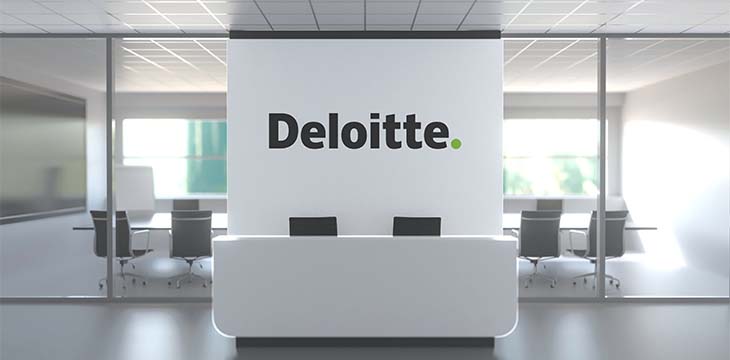|
Getting your Trinity Audio player ready...
|
Global professional services firm Deloitte recently conducted a survey of senior executives at U.S.-based retail organizations.
The report sheds light on the current motivations, key concerns, and barriers to adopting digital currencies, according to the executives.
Key insights from the Deloitte digital currency report
Deloitte conducted the research for the report between December 3-16, 2021, and stated that its aim was to gain insights into “attitudes and investments” related to the adoption of digital currency payment systems.
According to the report, over 220 million people now use digital currencies, and attitudes about them are quickly changing for the better. Both digital currencies and stablecoins are being adopted, and the vast majority of executives see them as being ubiquitous in their industries within five years.
At least 64% of retailers are aware that their customers want to use digital currencies to pay them, 83% expect increased interest from customers within the next five years, and 75% of them plan to accept digital currencies as payment within the next 24 months.
Over half of retailers processing more than $500 million per year have already spent $1+ million in their efforts to accept digital currencies. They are predominantly working with third-party payment processors to facilitate this.
Those surveyed said that speed of payments and cost efficiencies are key motivations for adopting digital currencies. However, they also mentioned brand image and growing their customer base as potential secondary benefits.
What are the challenges seen as hindering adoption, according to the report? Executives mentioned the complexity of integration, regulatory uncertainty, security, and the stability of the digital currency market as top concerns.
Has nobody told these people the truth about the state of digital currencies?
Reading through the Deloitte report, I was struck by the notion that the perception of digital currencies and blockchain technology is much more optimistic than the reality. Clearly, retailers are getting ready for what they believe will be the next big thing in payments, but in reality, even a fraction of the volume most of them do on a daily basis would bring the majority of blockchains to a standstill.
For example, BTC, the best-known digital currency by far, is only capable of processing seven transactions per second, and the fees per transaction are well over a dollar. Ethereum, which is the home of popular stablecoins like Tether (USDT) and Circle’s USDC, is barely capable of 20 transactions per second and fees swing between $3.50 at the low end to $1,500 and more when things get busy. It’s not difficult to imagine how this might be a problem for retailers.
Yet, the technological barriers are not the only problem. Right now, the industry is rife with fraud and financial crime such as money laundering. Due to an obsession with anonymous transactions and so-called decentralization, most blockchains, including the aforementioned two, are playgrounds for criminals of all kinds. Naturally, regulators can’t let this stand. Agencies like the SEC have already become hostile to most digital currencies, calling several out as illegal securities while only naming Nakamoto’s original Bitcoin as in the clear. Other regulators from around the world have vowed to clean up the space within the coming months and years, calling into question the very survival of many of today’s popular digital currencies.
Is there a solution to the current mess?
What’s the solution to all of this? It’s unclear how popular digital currencies like BTC, ETH, TRX, and DOT, or stablecoins like USDT and USDC can ever become ready for prime time or address the concerns of the retailers surveyed by Deloitte, but there is hope with Satoshi Nakamoto’s original Bitcoin blockchain, now known as Bitcoin SV. Today, it’s capable of processing 50,000 transactions per second, its fees are one-hundredth of a cent or less even during peak times, and it has never once, even while processing tens of millions of daily transactions, buckled or technically failed. Better still, it was designed to be fully legally compliant and work within the law from the outset.
While it’s wonderful to see the positive attitude from retail executives toward digital currencies, the truth is, there’s only one electronic cash system that can scale well enough to meet their needs. Bitcoin SV, Satoshi’s original peer-to-peer system, will have to serve as the backbone to all of this, or the digital currency revolution will fade away just as quickly as it arose.
Watch: The BSV Global Blockchain Convention panel, Blockchain Venture Investments: Driving Utility for a Better World
https://www.youtube.com/watch?v=HNy92DwO3EY

 12-26-2025
12-26-2025 




